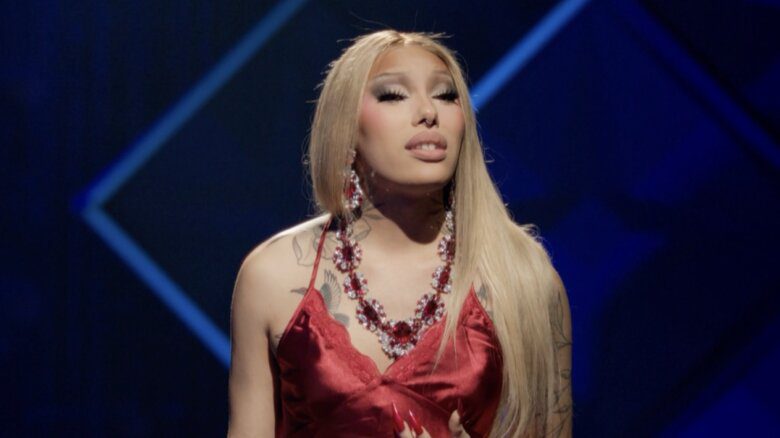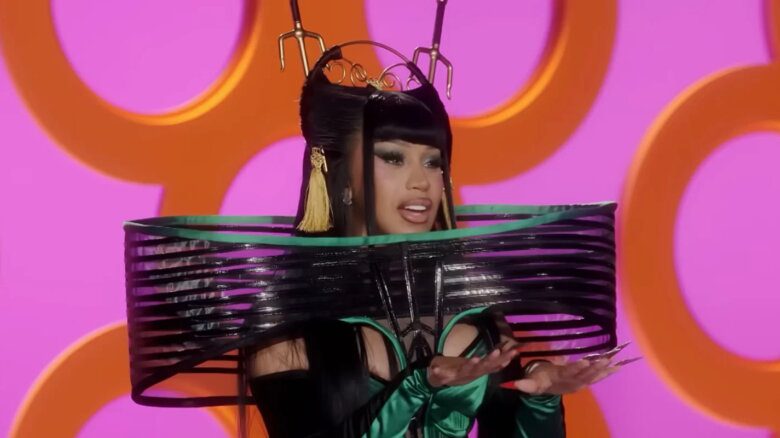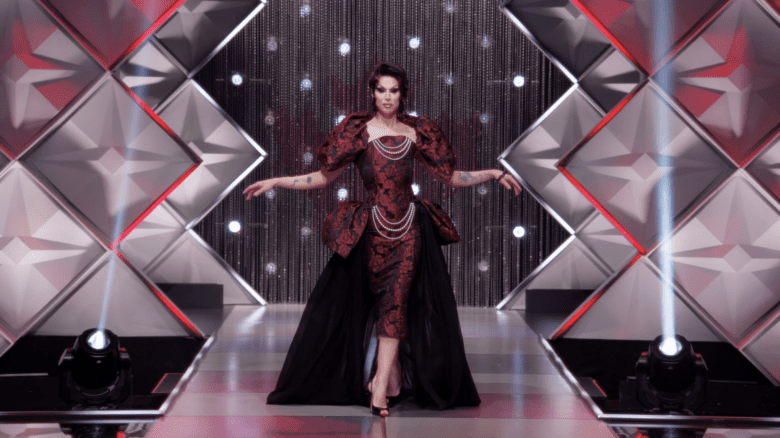When Shea Couleé hires someone, she’ll remember their name, advocate for fair compensation and respect their creative process—but if they overcharge her on a bolt of fabric, she’ll know. She spent years in the trenches repurposing everyday objects and applying drugstore makeup to create couture-inspired looks so glamorous and compelling that she now has a couture lifestyle. She is not to be underestimated.
From her humble beginnings in an Illinois farm town to becoming one of the highest-profile drag stars in the world, the 36-year-old Chicago resident has mastered the complex art of code-switching. Now she’s making her small-screen acting debut as Slug, a morally ambiguous hacker who assists the hero of Marvel’s new Disney+ series, Ironheart.
Being an outspoken non-binary Black person on a show for a brand that just scrapped its DEI program during a slow fascist coup seems like a contradiction in itself. But that’s Couleé: a person who knows how to hack an assignment to make it work for her. She’s a master class in surviving the impossible pressures of Black excellence—an experience she keeps close to the vest. She imparts her wisdom to her drag daughters, Kenzie, Bambi Banks and Khloe, who’ve become three of the biggest drag names in Chicago, one of the most segregated cities in the United States. Together they’ve publicly fought—successfully—to get more queens of colour on local stages.
Inside an empty studio in Wicker Park, a once thriving arts neighbourhood now overrun with strollers and upscale athletic brands, Couleé tells me that the House of Couleé is about becoming one’s best self. Hers is a story of fearlessness: jumping into the deep end of a pool before learning to swim, attempting flips without taking lessons, chasing her desires and defying the risks until she ends up exactly where she wants to be. As she speaks, I’m reminded of that “Formation” line where Beyoncé sings: “I see it, I want it/ I stunt; yellow hornet/ I dream it, I work hard, I grind ’til I own it.”
On a 2024 episode of Pose actor Angelica Ross’s podcast N.O.W.—No Opportunity Wasted, Couleé was more candid. Ross lived in Chicago while Couleé was coming up, and also performed drag, sometimes at popular tourist bars where she only made $75 plus tips for the night. Together they recalled memories of the hurdles they faced as queens of colour—bigotry, greater financial pressure, more stigma in being identified out of drag—and what it took to advance despite them. For Couleé, it came down to learning the double standards and etiquette in spaces she was navigating and adapting her approach to accomplish her goals. Couleé, a longtime tennis player and enthusiast (she’s often cited Serena Williams and Coco Gauff as inspirations), said, “The great tennis players understand their opponents’ gameplay and adjust accordingly.”
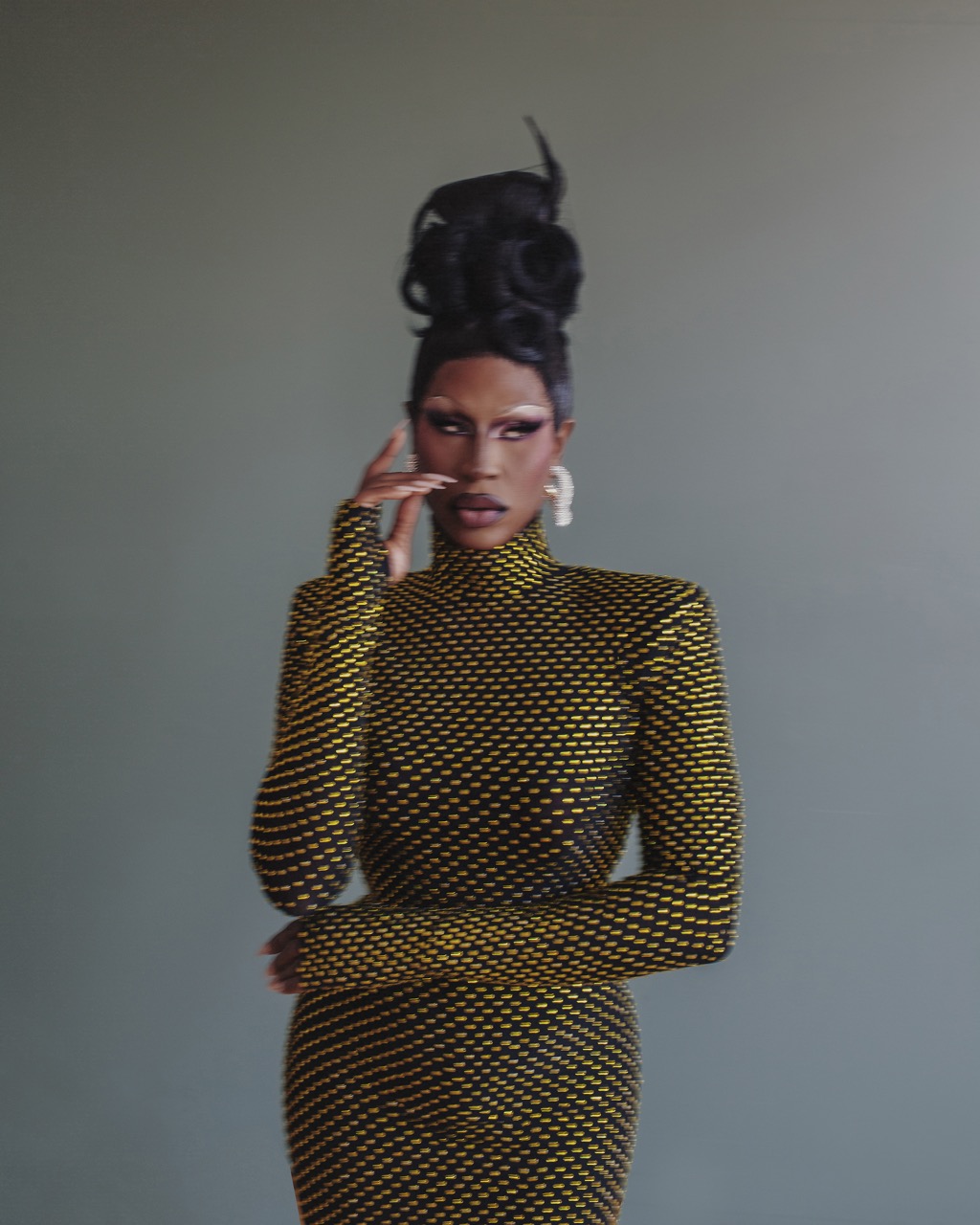
Credit: Elizabeth De La Piedra
Before becoming Shea Couleé, she was simply Jaren Kyei Merrell. (Since 2018, she’s used they/them pronouns offstage.) Growing up, she was the youngest of five, but with six years between her and her closest sibling, she had all the guidance of older siblings while enjoying many of the freedoms of being an only child.
“A lot of those formative years I spent by myself drawing, choreographing dances to music videos,” Couleé tells me. “I think I developed a lot of my personality within that solitude. I had hours at home after school to daydream and imagine a future for myself.”
Her mother is a Baptist minister who is still teaching children hymns every Sunday, and her father was a Marine who passed away two days before Couleé’s first Drag Race casting was announced in February 2017. He was a cinephile committed to watching at least two new movies a week, and Couleé remembers him expressing quiet approval of her identity through outings to now queer canon movies like Bring It On and Drop Dead Gorgeous. Her dad’s love of film and television ignited her desire to be on screen.
When Couleé was six, the family relocated from a small but diverse town in Indiana to Plainfield, Illinois, a tiny suburb an hour outside of Chicago. Her parents wanted to be closer to her father’s parents and to build a house from the ground up. (Her mother still lives in that home.) According to the 2000 census, Plainfield had just shy of 13,100 residents at the time; 93 percent were white, and less than one percent were Black. While Couleé’s parents recognized her unique talents and nurtured her creativity, they were adamant about her toeing the line: Go to school. Get good grades. Behave.
“They’re like, ‘Because you’re the only Black child in this environment, you’re going to be a lot of these kids’ first experience with a Black person, so it needs to be positive and impactful,’” Couleé says. “It didn’t feel like a lot of pressure. I think I’ve always been ambitious, so when my parents gave me a challenge, I was like, ‘All right, I’ll do that. I’ll impress them.’”
Couleé came to Chicago to study theatre at Columbia College, but she also wanted to be around queer and Black people. In high school, she would occasionally skip class with friends and hop the train to shop around what was then called Boystown, an area of northern Chicago that was the first American “gaybourhood” to be recognized by any U.S. government body. Her favourite store was Hollywood Mirror, whose entrance was hidden down an alley. It featured two floors of the kinds of eye-catching accoutrements—bad wigs, raver accessories, ’80s prom dresses and so on—that made it seem possible to leave Plainfield and become someone completely new. (The store closed in 2019.)
At Columbia, she switched to costume design; it gave her more employable skills while leaving the acting door open. Simultaneously, she began noticing a classmate who’d perform at night as a queen named Precious Jewel, then show up the next day still glammed out.
“I remember just being like, ‘That’s fierce,’” Couleé says. In 2011, she decided to dip her toe into the drag world by donning a wig and some makeup for Pride.
“I wasn’t crazy enthusiastic [about it], but I went out. The attention was overwhelming because I had never commanded attention [like that] offstage. I’m just, like, manoeuvring through the world and heads are turning. I was intimidated by people perceiving me. It’s so strange, being told that you’re pretty and feeling overwhelmed by it. I turned to my friend like, ‘I want to go home.’”
Couleé felt vulnerable when directly confronted with recognition—but powerful when she got to command it from a stage. With encouragement from her friends, she made her drag debut the next month as part of Jeezy’s Juke Joint, a then infant variety show that’s grown into a popular Midwestern showcase for Black talent rooted in vaudeville and burlesque. Wearing sunglasses, a tuxedo jacket, shirt, tie and fedora, she performed a burlesque routine to Beyoncé’s “Suga Mama” that ended with her in a shimmering beaded silver bra-and-panty set.
“I got a standing ovation,” she recalls. “In all my years doing theatre, I never got such a visceral reaction from an audience like that.”
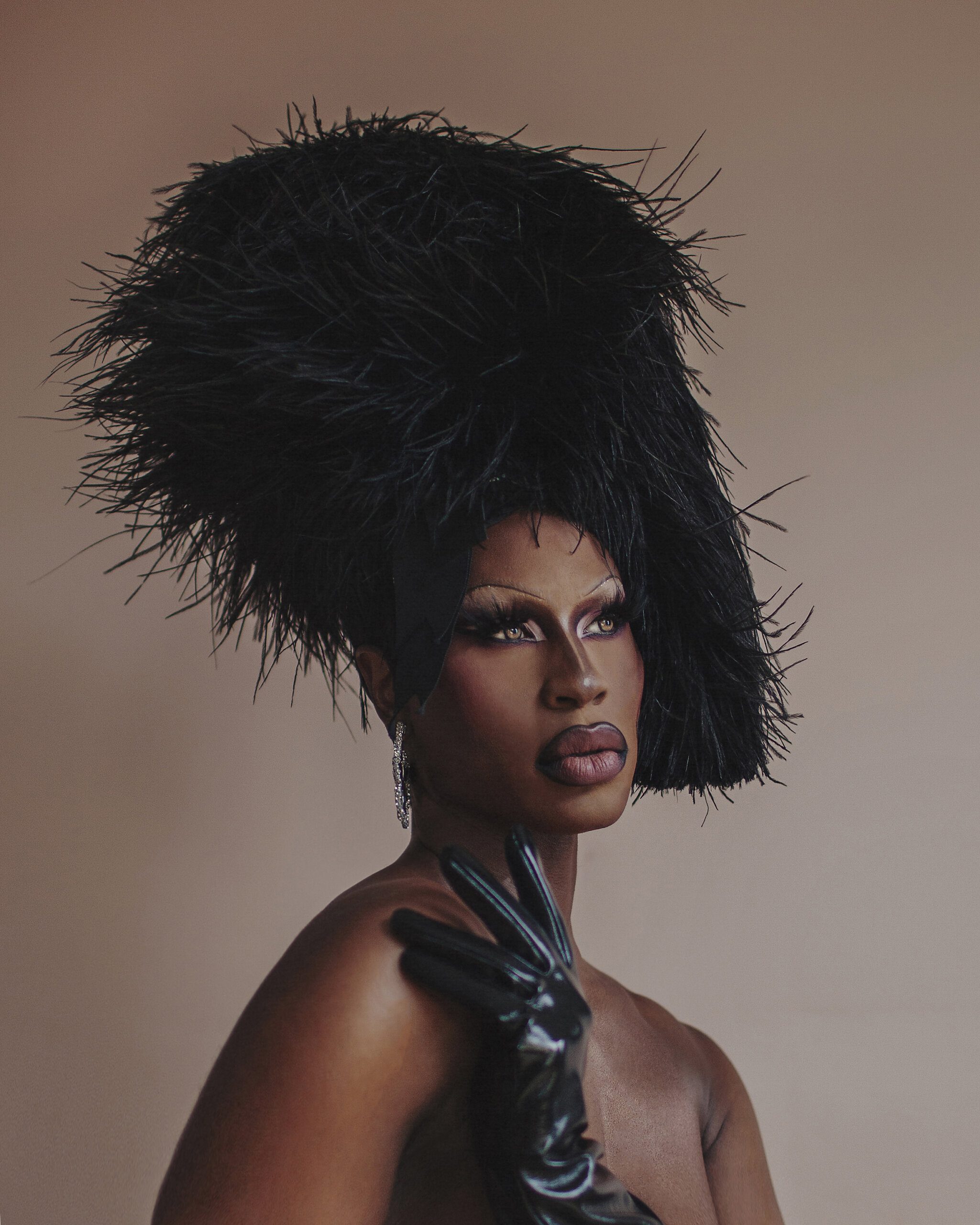
Credit: Elizabeth De La Piedra
Right now, there’s nothing America fears like a Black trans femme. When Barack Obama was elected president in 2008, Couleé was 19 and voting for the first time. A Black man from Chicago was holding the highest office in the nation, and he’d campaigned on issues long treated as untouchable, like shutting down Guantánamo Bay. Anything felt possible—and a year later, RuPaul’s Drag Race premiered.
Couleé started her journey just three years before TIME ran a story called “The Transgender Tipping Point,” which acknowledged the heightened visibility of trans rights. Laverne Cox was on the cover, as though to suggest that a new era of racial and gender freedom had arrived. Today, white supremacist activity is visibly rising in the United States, and trans people are enduring more social vitriol and institutional bigotry than ever. Racial and gender liberation are in peril—but if anyone knows how to carry a light through the chaos, it’s Couleé.
Until Drag Race, queens didn’t have a very clear path to a “career.” Drag was done mostly for love of the game, and it complemented other gigs or full-time jobs. RuPaul herself was an outlier—someone who owes her success as much to her exceptionalism as showing up at the right time in New York nightlife—but her show helped Chicago queens become a leading cultural export. In addition to Couleé, Drag Race has elevated the careers of at least thirteen locals, including The Vixen and Kim Chi, as well as neighbouring queens like Trixie Mattel, whose careers benefited from the city’s club culture. When Drag Race premiered, Chicago had an estimated 40 queens regularly working in nightlife. That number has more than doubled since.
But when Couleé cartwheeled into the scene, pop culture was still whetting its appetite for drag. That meant fewer opportunities and lower pay, but more innovation. It also meant learning from queens who’d been doing it as far back as the ’80s, like alt oddball Jojo Baby, whose drag was inspired by Boy George, Clive Barker and the Muppets; and Tajma Hall, a Black queen who ran a weekly show at one of the biggest gay bars in the city for eleven years.
Before her Jeezy’s performance, Couleé workshopped her name with a friend by throwing things out and seeing what got a response. She settled on Shea, her family’s pet name for her and a phonetic version of her middle name. Couleé was something between “coulis,” fruit sauce that seems fancier because it’s French, and a line in a playful East African call-and-response song she grew up singing. Her persona fuses a highbrow sense of camp with her unique taste in Black culture and heritage. One of her most discussed Drag Race looks is her Nubian reimagining of Botticelli’s The Birth of Venus. She sported an afro and wore a bejewelled flesh-tone bodysuit. Her stacked ring necklace was made by hot-gluing gold cords to a Starbucks cup.
“There’s a strange expectation for instant gratification,” Couleé says of younger queens. “I’m from the generation where you had to work your way up. You had to support shows and do amateur nights and spots where you didn’t get paid and just worked for tips. Now girls come out like, ‘Why do I not have a weekly show, getting $500 a show?’ You have to work for that! Show up for your community before expecting them to show up for you.
“Also—learn things like stage presence. There’s this whole generation of what we call ‘bedroom queens,’ who just kind of practise at home, don’t really leave the bedroom, never really get a lot of experience with crowd work or quick-changing backstage, you know? They want the fame and notoriety, but that only comes with work.”
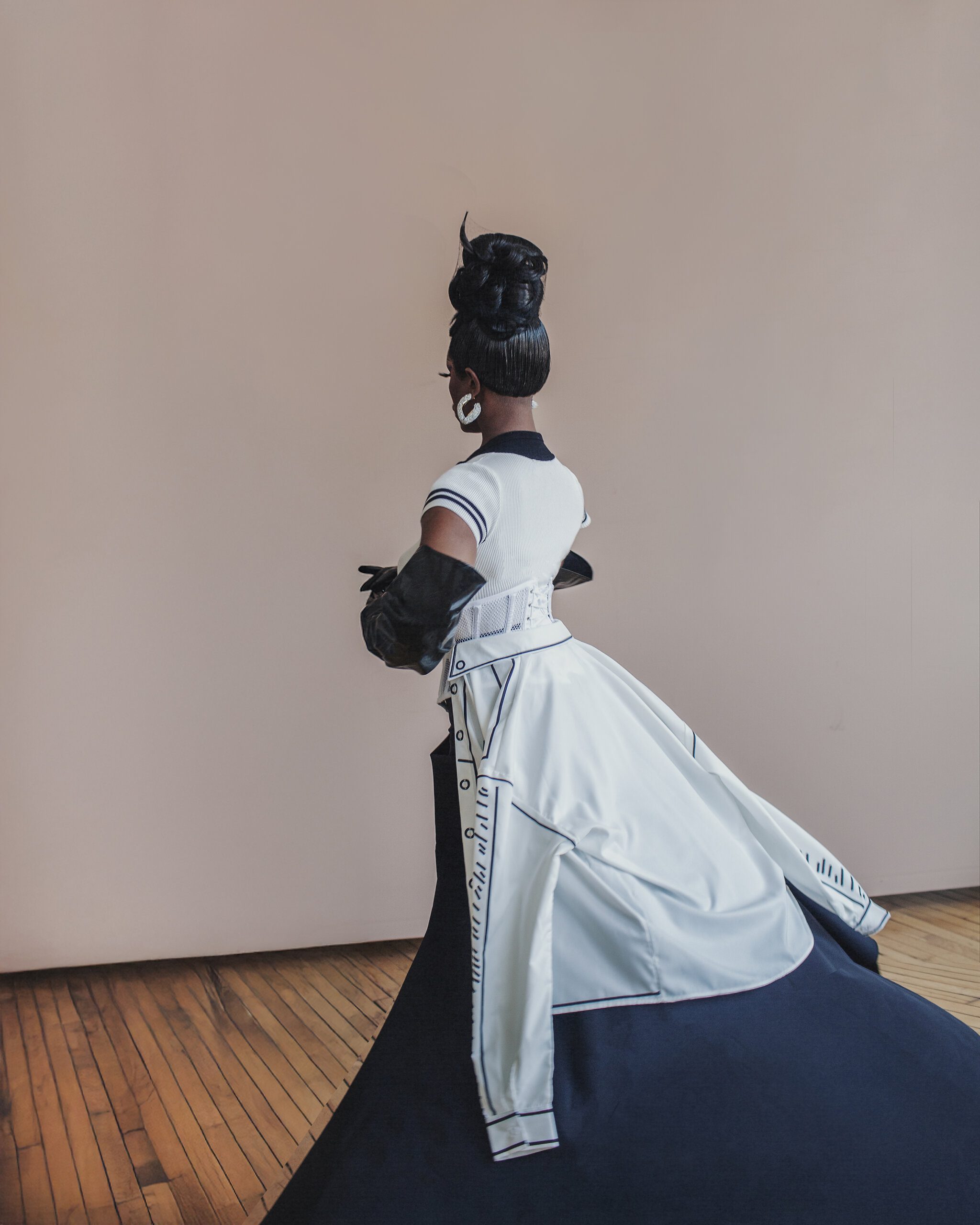
Credit: Elizabeth De La Piedra
There are two things outsiders miss about Chicago. First, it’s known in the entertainment industry as the city performers go to cut their teeth before actually trying to “make it” in New York or Los Angeles. Chicago has a club culture—it gave the world house music!—but there’s no velvet-rope VIP. Nightlife celebrities are in the middle of the dance floor alongside everyone else. Artists are still competitive (Chicago’s the third biggest city in America, and it’s not cheap to live there), but more of that competition centres on reputation or clout. This keeps a free-spirited freak flag flying in the city’s art scenes as much as it encourages Chicago creatives to stay humble and manage their expectations. Longevity requires dedication.
Second, artists who come from Chicago tend to be socially minded. Bad actors like to use Chicago as a racist dog whistle for everything that’s “wrong” with America. It’s got a rich social justice history (ever heard of Fred Hampton, the Young Lords or the community organizing model?), but it’s also a strong arm of the Democratic Party machine and has a track record of corruption, like operating a secret police torture site, and prejudicial policies, like closing schools serving Black communities. White people are concentrated on the north side, while the south is overwhelmingly Black. “South side gets coded as something separate and bad (that’s part of why Drag Race season ten contestant The Vixen incorporated “South Side Trash” into her branding). It’s true that that’s where a lot of violence happens, but it’s also an area that’s been systematically denied life-changing resources for decades. (The term “redlining” was initially coined by social scientists in the 1970s to describe how banks were denying loans and insurance policies to South and West Side residents.) Northalsted—formerly known as Boystown—is on the north side, and it has its own history of racism. On Ross’s podcast, Couleé compared sizing up white bookers and party planners to Coco Gauff preparing for a tennis match.
“A lot of white folks in the queer community don’t expect you to be a worthy adversary,” she said on the podcast. “I’ve learned how to dismantle those things by being really disarming, being clever enough to realize what types of communication work well, what makes them feel comfortable. It’s not necessarily about being agreeable—I have no problems advocating for myself, for what’s right and equitable. I just know exactly how to communicate with people.”
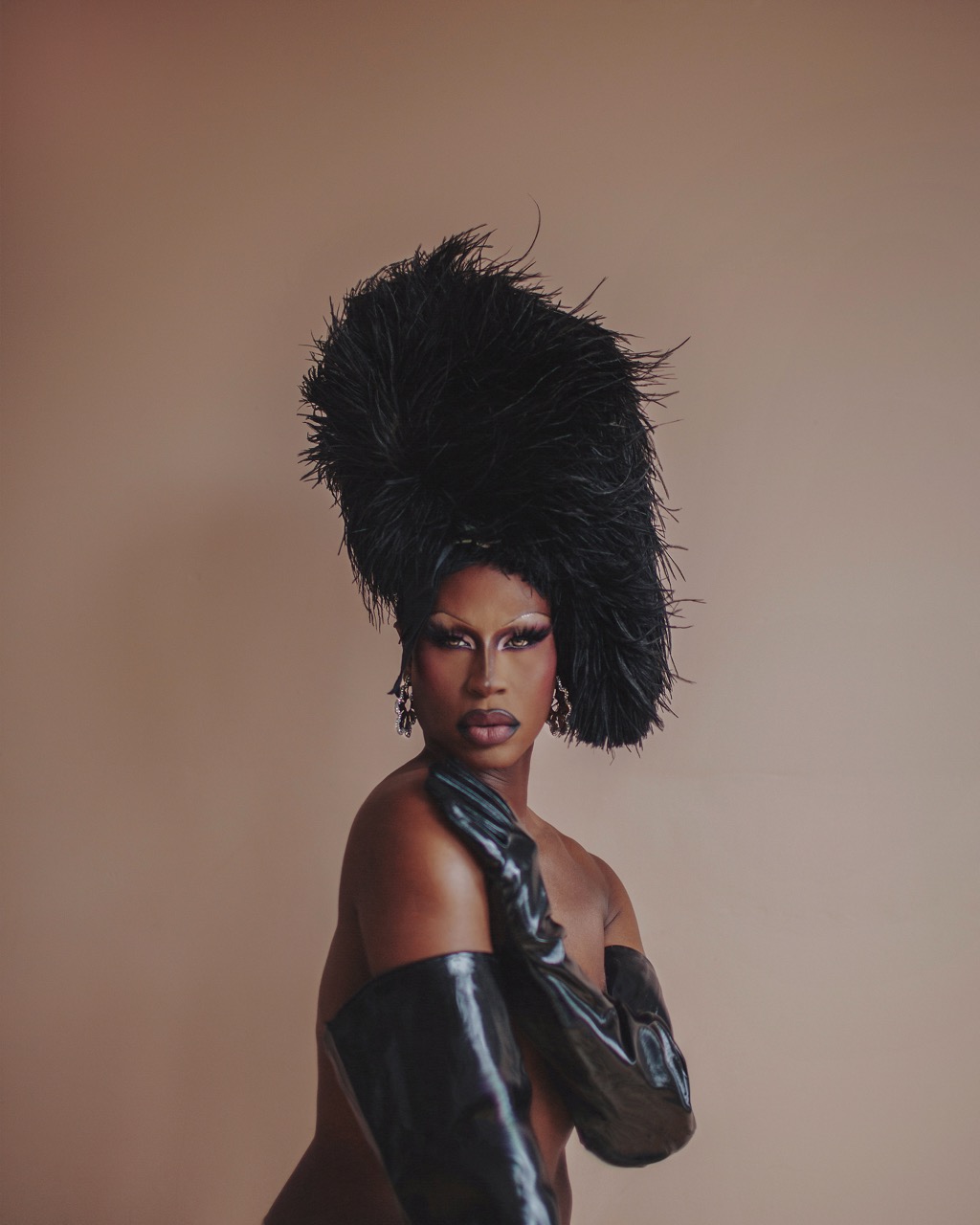
Credit: Elizabeth De La Piedra
In a conversation with musician Mykki Blanco that appeared in PAPER in 2020, Couleé said watching herself on Drag Race forced a slow transition from worrying about how powerful white people perceived her to recognizing how she could use her opportunities to create more for Black people, especially Black trans women. Before the show, Couleé used to perform in a monthly all-Black drag revue called Black Girl Magic that The Vixen began organizing in 2016. Rewatching Season 9, Couleé noticed how certain feedback felt coded, that white contestants were celebrated for things contestants of colour would be ridiculed for, and that she was expected to bury her grief about her father and generally suppress her emotions to stay competitive. When she saw The Vixen’s framing as an angry, hostile Black woman the following season, it felt like all the familiar microaggressions and discriminatory attitudes both had faced in Northalsted were playing out for a national audience. She knew things had to change.
Just after the George Floyd protests broke out in 2020, Season 5 of Drag Race All Stars began. Couleé returned to the cast on the strength of her choreography, costuming and humour. While the season aired, she joined the Chicago Black Drag Council, a newly formed coalition to combat harms Black performers regularly encountered in Boystown, like unequal pay and club policies against hip hop. At a town hall that summer, Couleé and Bambi Banks named racist gatekeepers who’d blacklisted them or friends for pushing back against mistreatment. “Book more Black people,” they pleaded. Organizers from multiple queer communities demanded that Boystown stop being such a boys’ club—to the point where the neighbourhood was renamed. Couleé took the Drag Race crown at the end of July, and by fall, the neighbourhood became Northalsted.
When she was called to audition for the Black Panther spinoff Ironheart in 2022, it felt surreal. The comic from which the show was adapted was written by Eve Ewing, a Chicago sociologist who became famous for her research on South Side school closures. Sam Bailey, one of Couleé’s old friends from her Columbia days, was hired as one of the show’s two directors. When Couleé started in drag, she was living on Bailey’s couch, and now her friend was inviting her to audition for a series set in the pair’s hometown.
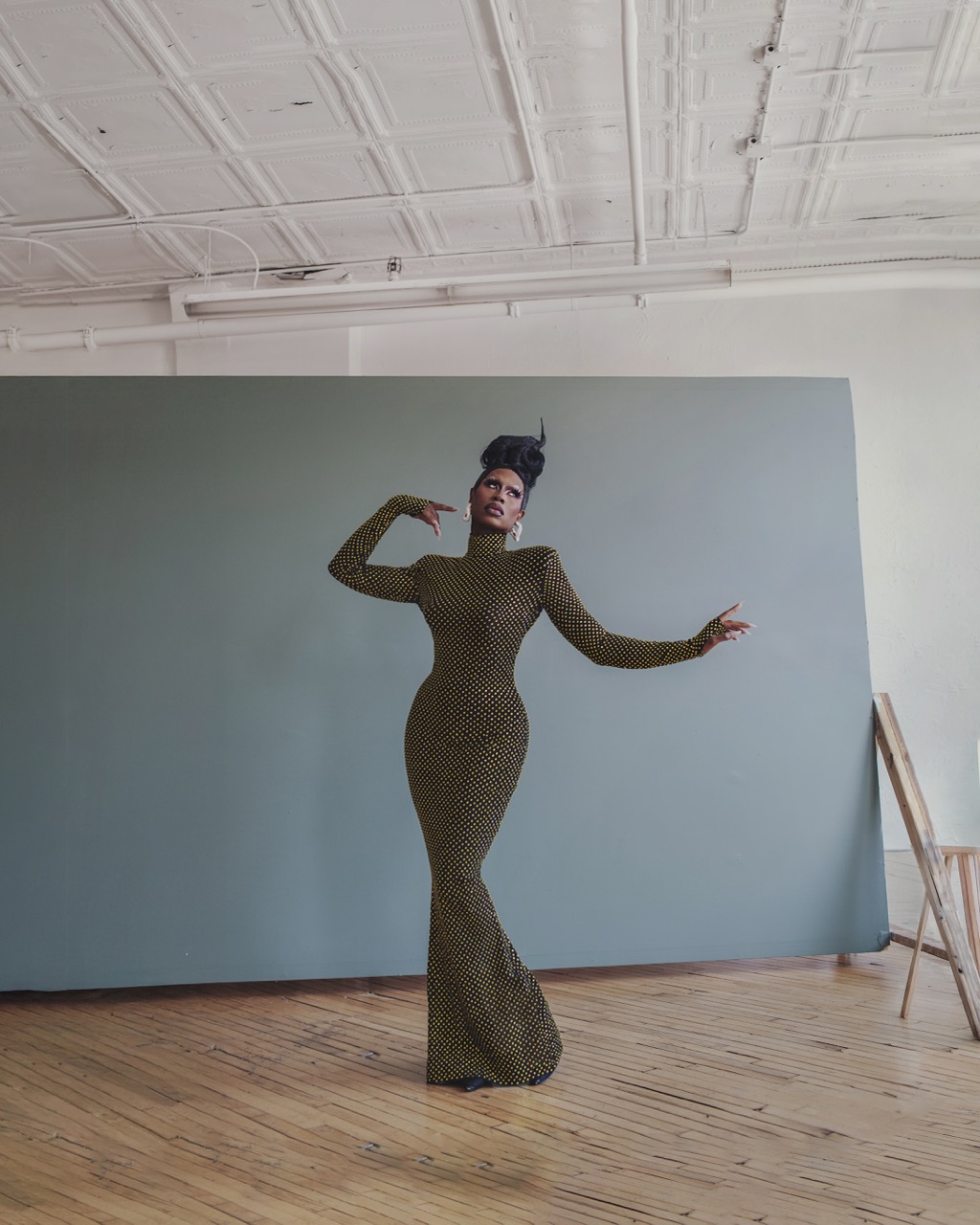
Credit: Elizabeth De La Piedra
“[Bailey] was in the process of doing pre-production for the show and just had a vision for my involvement,” Couleé explains. “Ultimately, it was up to [executive producer] Kevin Feige to make the decision, but he was like, ‘Oh, I want Shea.’”
In 2022, Couleé competed on an all-winners season of All Stars and Ironheart’s cast was announced. By the end of the year, production on the miniseries was wrapped, and the show’s release became a waiting game. Did she expect it would take three years to launch? No, Couleé simply makes the most of opportunities as they come. Since her first season of Drag Race, she’s walked the runway for Savage X Fenty, represented brands like Lush and Valentino, campaigned in support of Elizabeth Warren’s presidential bid, cut a record, hosted a podcast and used her platform to advocate for a free Palestine, including signing an open letter for a ceasefire—to name a few ways she’s kept busy. On Ross’s podcast, when Couleé was asked if her feelings about taxes have changed with her income, she said yes.
“As I’ve gone up a couple [pay] brackets, [the tax system] really makes me resent the police that much more. I’m like ‘Wow, I’m paying multiple salaries,’ she said.
She’s viscerally aware how none of it came easy—and how quickly it could all disappear. As states begin to pass drag censorship laws, drag opportunities have been declining everywhere (daughter Khloe declared a drag drought on social media late last year). While Couleé was always excited to be part of Ironheart as a character who steals from the rich to give to the poor, she’s feeling especially heartened in the current climate. Slug is a former drag queen who understands the system is rigged, but she’s found ways to exploit that system’s vulnerabilities to redistribute wealth. She describes the story as one that reminds viewers you can’t forget your community and where you came from for a second, because that’s when trouble will find you.
“I wish more queens, especially those with big platforms, would be more active about speaking up and using their platform for other things than branded content and sponsored posts,” she says. “I think we have a responsibility to use [our platforms] to help our community. I understand that brands don’t always respond well if you’re politically active, but if my activism is a deterrent to you, then I don’t want to work with you. Some girls will look the other way for a cheque. I just don’t think Chicago girls are built that way.”
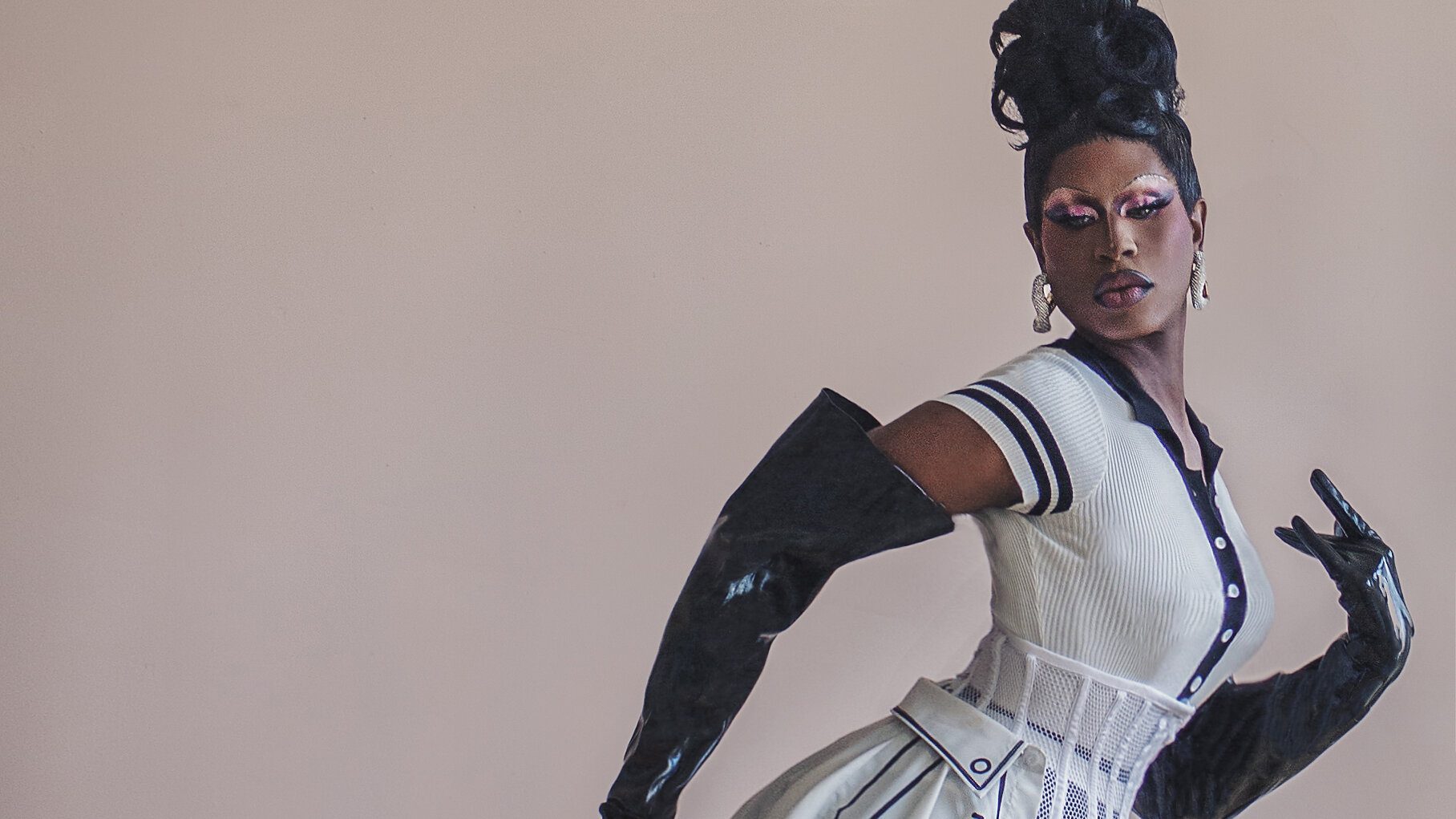

 Why you can trust Xtra
Why you can trust Xtra
